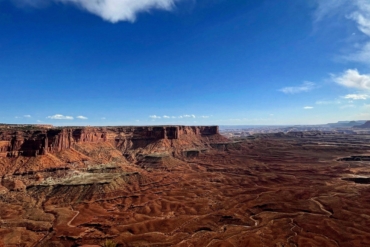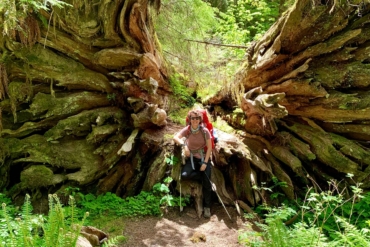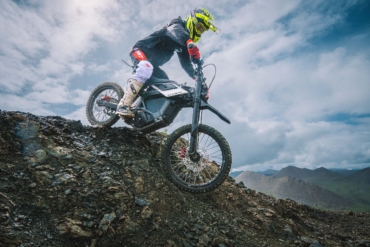You can install your own roof rack even if, like me, you have a smooth roof with zero attachment points for a Yakima Roof Rack System. Here’s how it went.
I have two things we need to talk about. The first is the limited size of a Chevrolet Silverado 1500 with a topper. And the second is way too many hobbies. If I were to accurately organize and travel with all my gear — let’s be real here — I’d need a semi-truck with two of those trailers. But that seems unreasonable.
So, I’m currently working on solutions. The first big addition for me is putting a Yakima roof rack with a DoubleHaul fly rod carrier onto my truck topper. The small footprint of the DoubleHaul will also leave room for more storage or carrying solutions should I need them.
It also gives me the option to leave rods strung up for easy fishing when on the road. This is what I’m most excited about.
But I was certainly intimidated when I looked at the smooth top of my truck’s topper. Initially, I thought about getting it done professionally.
After watching a few videos and reminding myself that I’m consistently capable of a lot of strange things, I decided to dig in and try it. After all, I’d only ruin a very expensive truck topper.
Anyway, here’s how I DIY’d my Yakima rack prior to adding my DoubleHaul to the system. Here’s the before pic, and enjoy my instructions.

Installing Your Yakima Rack, Tracks First
The Custom-Fit Yakima SkyLine System
I’ll note that the rack that I installed is the SkyLine system, but most of these instructions will work if you need to install tracks, landing pads, and more for your Yakima rack. Yakima has a few different systems and depending on your specific vehicle, you’ll need the one that fits best.
I will say, this was one of the tougher installations because of the smooth exterior of my topper. But if I can do it, most people can.

I needed the following components to build my custom SkyLine System rack:
- Yakima 60″ Tracks for Custom Fiberglass Installation — There are multiple options for tracks if your rig doesn’t have tracks or built-in rails, side rails, or connection points. Reach out to Yakima to figure out what’s most suitable for your vehicle.
- Yakima Landing Pads — These connect to the tracks in order to create a platform for your rack. One box contains a set of four, which is all you need.
- SkyLine Tower Set of Four — The towers then build the setup for your cross bars. Four are included with the set.
- JetStream Cross Bars — Cross bars make the rack happen.
- Power Drill — With a 1/8-inch drill bit and ¼-inch drill bit.
- Pocket Knife — For cutting rubber. More on this to come.
- Measuring Tape — Really gotta get this stuff (mostly) perfect.
Installing the Tracks
First, I decided that it would be easiest to fully remove the truck topper and work on all of this stuff from the ground. I was mostly right. I don’t like ladders, and I wanted to adjust the fit of my topper anyway. So, I pulled the four clamps and asked for help to get the topper to ground level.
The most nerve-wracking part of laying the tracks is that you must drill holes to make the connections from track to topper. But it’s fairly straightforward.
You simply lay the tracks down, measure with the measuring tape for equidistance on both tracks, and straighten them as much as you can. Use a permanent marker to mark every other hole; there should be six holes in total for each track. Then, you drill each hole with the 1/8-inch bit, followed by opening the hole with the ¼-inch bit.
I was worried I’d get this wrong. But I didn’t. It was pretty easy. You do have to add silicone to the holes prior to installing the screw/washer system, so it can get a bit messy.
A Bit of a Complication

This is where things got complicated with having the topper on the ground, especially since it was on gravel.
I had to shimmy under the topper and have my helper push down the screws with the included Allen wrench so I could tighten the tracks to the roof. The screws were long enough except at the ends, which needed screws that were about a half-inch longer.
I had to go to the local hardware store and buy four extra screws that could tamp down the ends of the tracks. A small expense at just a few bucks, but annoying enough. In reading others’ issues with installing these, screw size can be a problem.
The other thing you want to remember is to add the four plates to each track from your landing pads. This was confusing at first, because the plates are not packaged with the tracks.
These plates are little silver pieces that slide into the track to attach the landing pads. They’re located in the landing pad box, and you’ll end up with eight total, four on each side. They slide very easily into the track for ease of placement in the next step.
Pro Tip: If you have a curved or insulated topper — or just something with a thicker roof — go ahead and bring the screw and the bottom screw-in to your local hardware store and ask for help to get an appropriate match.
Installing the Yakima Landing Pads

The landing pads are the connection point from the track to your rack system. They are fairly simple to put together, but you’ll need to make sure you have the correct landing pads for your system.
First, you’ll pull the tops from each landing pad. Keep these in a safe place. If you want to take off your rack for any reason, the tops go back onto the pads to keep debris from settling into important points of connection.
Then, you simply align each pad with two of the plates. You use the given Allen wrench to screw these in, but don’t tighten them just yet. You’ll need to align your SkyLine towers and for that, you need a little bit of give in your landing pads.
I didn’t experience any issues with this part. Easy-peasy lemon squeezy.
Installing the SkyLine Towers
This, to me, is the most complicated part of the setup. I watched Yakima’s video multiple times trying to figure this out, and I highly recommend that you watch it too.
The first bit is where I initially got confused. You open the face of the SkyLine tower and use the torque tool to unscrew the bar adjuster tool. This opens up a security door to another screw. (This is where watching the video is really helpful.)
From there you click in the bar adapter seat included with your bars. These are in the box with your bars and there should be four of them.
I have the JetStream bars, so this particular portion of setup is particular to these bars. They do click in but it’s not a secure feeling. Don’t be alarmed. You’ll torque all this down once it’s set up.
From there, there’s a silver piece in each JetStream bar adapter seat. That screws in using the torque tool as well. You’ll screw it in so tightly that it clicks like a gas cap. I had to twist really hard to get it to do this, so give it some elbow grease.
Attaching the Bars to the SkyLine System
I got confused here. The bottom of each JetStream bar has measurements written onto the bar. The top of the bar is blank. Both sides of the bar have a rubber infill that is removable, but the bottom of the bar’s connection point for this infill is centered.
You need to peel back the infill about two feet. From there, you’ll slide the towers onto each side of the rail. This was hard. It did not want to go, each time.
I had to press down the rubber housing on the top side to wiggle each tower onto the bar. And I really had to power through to get it past the first 6 inches. This will make a lot more sense when you do it.
From there, measure the distance of your tracks and adjust your towers as much as you can so they attach evenly to the bars. For instance, mine are 46 inches apart. I simply wiggled the bars so the connecting piece was as close to that distance as possible.
Installing the Yakima SkyLine System

In order to place the towers on the landing pads, the front door of each tower needs to be completely open.
This seems simple, but my goofy brain took a bit to figure it out. The video certainly helps with some of this, but not all.
Closing the tower door locks the rack into place; therefore, if it is not entirely open, it will absolutely not slide into the landing pad easily. My helper and I had to wiggle each tower a bit and then make sure it was even.
This is annoying since the towers don’t move very easily. But hopefully, you don’t have to do it often, so just make sure it’s right when you do it.
Once everything is even, use the Allen wrench to torque your landing pads into place. This, for some reason, is not on the video. But it seems important.
Then, grab your torque tool and level out your rails. Once again, you’ll screw it down until you hear that gas cap noise three times. Then, snap your covers and test your rack for movement.
Installing Your Yakima SkyLine Rack: Final Touches

Remember when you peeled back that rubber infill? Grab your pocket knife and slice it on the interior side of each SkyLine tower.
Instead of trying to measure out the right distance for the short end of the bar, I just stuck the leftover piece of infill into the end of the bar, made sure it was flush against the external side of the tower, and lobbed off the excess.
From here, you’ll simply add your end caps on. Voilà! You now have a rack system ready to roll for whatever Yakima accessory you want to put on your rig.
Whether I plan to carry fly rods, skis and snowboards, a bike rack, or just extra gear in a cargo box, the world is now my organizational oyster. And if you’ve got a truck topper and the need for more gear-hauling capability, it can be yours too — all DIY.








